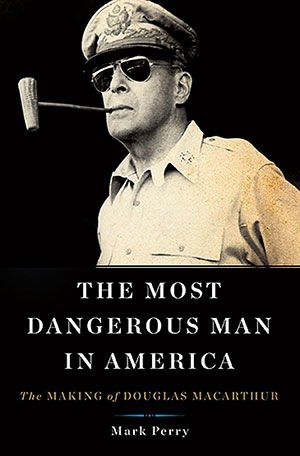Журнальный клуб Интелрос » Joint Force Quarterly » №77, 2015

Douglas MacArthur and Franklin Roosevelt first met in 1916 when both were involved in planning prewar mobilization for the Woodrow Wilson administration. Two years later, MacArthur was commanding the Rainbow Division in France where he earned seven Silver Stars for courage and bravery in leading his troops in battle against the Germans, while Roosevelt was serving as President Wilson’s assistant Secretary of the Navy. When Roosevelt became President in 1933, MacArthur was the Army’s chief of staff (having been appointed by President Herbert Hoover). Roosevelt, mainly for political reasons, extended MacArthur’s term as Army chief of staff, but the two repeatedly clashed over budget matters. During World War II, Roosevelt as commander in chief selected MacArthur to lead the U.S. war effort in the Southwest Pacific.
The story of this fascinating relationship between two of the giants of the 20th century is the subject of Mark Perry’s book. The title comes from a remark Roosevelt reportedly made to one of his aides early in his Presidency. When the aide suggested that Louisiana’s Senator Huey Long was the most dangerous man in America, Roosevelt said no, Douglas MacArthur was. Perry credits Roosevelt with “taming” MacArthur’s worst instincts and characteristics and skillfully using this most talented commander to help win the war in the Pacific.
Perry’s book covers familiar ground: MacArthur’s early defeats in the Philippines, his daring escape to Australia and famous pledge to return to liberate the Philippines, his frequent clashes with Washington and the Navy over war strategy and the allocation of resources, and his innovative strategy during the Southwest Pacific campaign where he brilliantly used land, sea, and air forces jointly to bypass Japanese strongholds during the New Guinea campaign.
Perry describes in great detail the formulation and implementation of MacArthur’s Southwest Pacific strategy. From the defense of Australia and Port Moresby to the New Guinea offensive, and on to the recapture of the Philippines, Perry shows MacArthur at his best—waging a war of maneuver where possible that integrated all aspects of military power to achieve relatively economical (in terms of human costs) victories. It involved, writes Perry, “a series of combined arms operations involving dozens of ships, hundreds of aircraft, and tens of thousands of soldiers, whose movements would be coordinated over thousands of miles of ocean” (p. 230). In Operation Cartwheel, which focused on eliminating the Japanese stronghold of Rabaul, MacArthur, in Perry’s judgment, “coordinated the most successful air, land, and sea campaign in the history of warfare” (p. 354).
MacArthur’s success was due in part to his selection of and his reliance on first-rate subordinate commanders, such as the Airman George Kenney, Admiral Thomas Kinkaid, and infantry General Walter Krueger, as well as his willingness to work with key naval commanders such as Chester Nimitz, William Halsey, and Raymond Spruance despite intense inter-Service rivalries. Perry also describes MacArthur’s relationships with other key wartime figures, including George Marshall, Dwight Eisenhower, Secretary of War Henry Stimson, and various Australian and Filipino politicians.
MacArthur, of course, had his shortcomings and character flaws. He was arrogant, vain, and sometimes petty and vindictive. He viewed those in Washington who denied him resources or disagreed with his strategies as enemies. He frequently stretched the truth or outright lied about the status of battles (characterizing hard fought battles as “mopping-up operations”) to vindicate his command decisions and receive adulatory media coverage. The Philippines campaign, for example, was far more costly than he predicted or would later admit; it degenerated into a bloody war of attrition that Perry describes in all its gruesome detail. But MacArthur was also incredibly courageous and brave, and was arguably the most brilliant military commander of World War II.
Roosevelt, a talented but deeply flawed man himself, to his credit recognized that MacArthur’s strengths outweighed his flaws and weaknesses. Despite a personal animosity between these two leaders that stretched back to MacArthur’s days as Army chief of staff, during the war both men usually put the country’s interests first. Their relationship, Perry writes, “defined the war in the Pacific” (p. 355).
Perry’s book is a welcome reevaluation of one of our nation’s greatest and controversial military commanders and his relationship with his wartime commander in chief during the most momentous war in history. It provides valuable lessons on military leadership, inter-Service rivalries, civilian-military relations, and most important, the strategic benefits of joint operations. JFQ